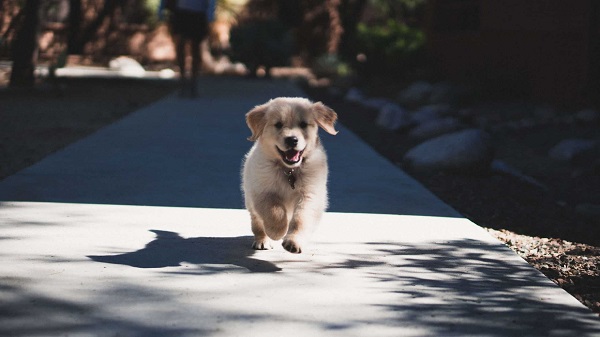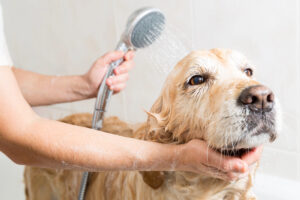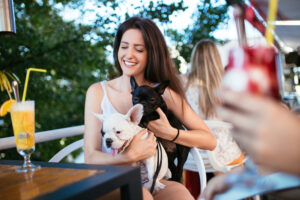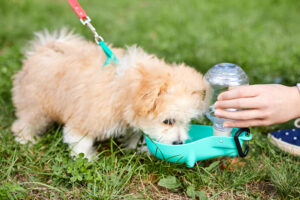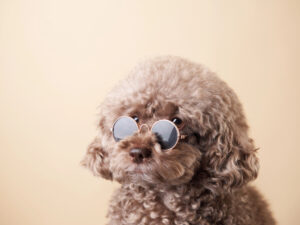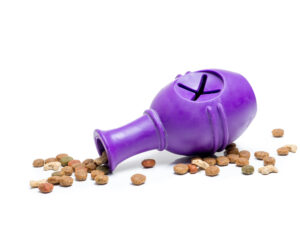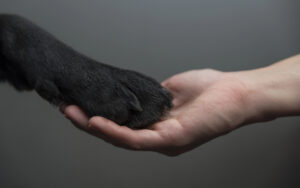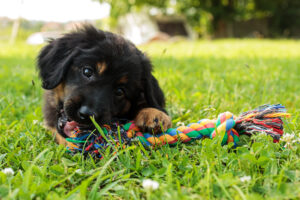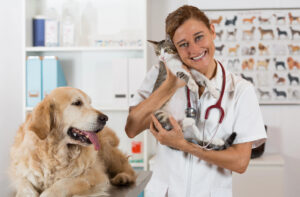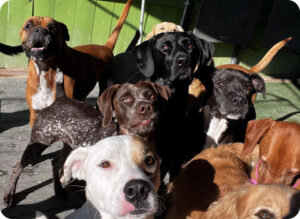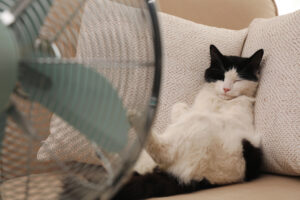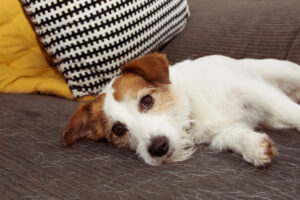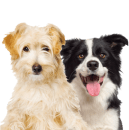So you’ve just adopted a new puppy and you couldn’t be more excited. However, once you get your puppy home, it’s time to get down to business. Specifically, where your puppy will be handling her business! Unfortunately, successfully potty training a puppy is easier said than done, especially for a first-time puppy parent. Keep reading to get the best puppy potty training tips!
And if you ever feel like you need some help with training, we’re here to help you with your dog training needs.
Your Puppy Potty Training Shopping List
Setting yourself up for successful potty training starts with getting the right supplies for the job. You probably have the puppy shopping list basics covered, like a bed, collar, and harness, but do you have your potty training shopping list covered? Here’s what you’ll need to start with:
- A correctly sized dog crate
- A puppy gate
- A potty spot
- Treats
- An enzymatic cleanser
Our Best Puppy Potty Training Tips
Now that you know what you should buy and how it’ll help you in the potty training process, we can move on to our best puppy potty training tips!
Determine your puppy’s “hold time”
Your puppy doesn’t have the same bladder capacity as an adult dog, so you can’t expect her to hold her waste for very long. Understanding her hold time will go a long way in helping you successfully potty train her.
You can figure out your puppy’s approximate “hold time” by translating her age in months to hours. For example, a 2-month-old puppy would have about two hours of “hold time”. Your new puppy will need plenty of opportunities to relieve herself throughout the day, so make sure you can provide that for her.
Get your puppy comfortable with her crate
It’s important to get your puppy used to her crate so she understands that it’s a space for her to relax in and not a punishment. Start by enticing her to walk in with toys or treats and leaving the door open as she explores and settles in the crate. Keep in mind that it’s not appropriate to crate a puppy or any age dog for too long. When starting out with your puppy, confinement should be limited to her hold time.
Set a schedule and stick to it
Because your puppy’s hold time is so limited, she’ll need to go out at various times throughout the day to avoid accidents. These times will typically be:
- First thing in the morning
- After a meal
- Following play and training sessions
- After a nap
- Before going into her crate
- After being let out of her crate
- Before bedtime
When you create your puppy’s daily schedule, make sure to keep each of these bathroom breaks in mind. It’s understandable that it can be difficult to keep track of your puppy’s daily schedule when you already have your own daily routine to take care of, so a helpful tip is to write down when your puppy gets bathroom breaks.
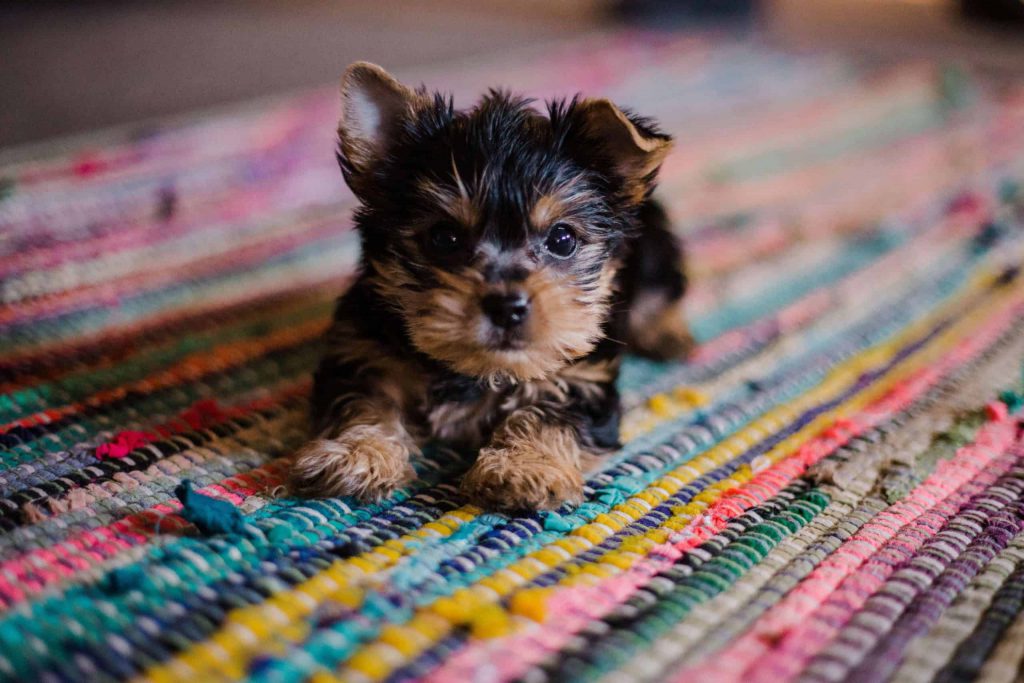
Create a space for your puppy
If you need to be gone for a significant part of the day for work, errands, or something else, your pup will need an area to get comfortable in. This area should have the following features:
- Enough space for puppy to hang out and walk around
- An area for your puppy to relieve herself
- It should be made up of your puppy’s crate and an exercise pen
- This space should include an artificial “potty” lawn
- You should leave her with a few toys to keep her occupied
Keep in mind that although this space will be safe and comfortable for your puppy to hang out in while you’re gone, she’ll still need to be walked at least once during the day. If your schedule won’t allow that, consider hiring a dog walker or having a friend or family member stop by to walk your puppy.
Leaving your new puppy alone for an entire 8-hour workday can be very stressful for her. It may lead to issues like separation anxiety and it can even delay the potty-training process.
Read your puppy’s body language
Your puppy is more than capable of letting you know when she needs a bathroom break. All you need to do is learn to understand it. Once you’re able to do this, you’ll get a much better understanding of your puppy.
Keep an eye out for early predictors of the need for a bathroom break like distractedness, walking away from you, and hiding behind furniture.
Use a potty phrase
Teaching your puppy a potty phrase can help you encourage her to go to the bathroom more quickly. This is particularly helpful if you’re trying to take her out for a quick bathroom break or taking her out in especially hot or cold weather.
Whatever phrase you choose, say it calmly and at the same time that your puppy relieves herself. Follow up with a treat and praise immediately after she finishes. Eventually, your puppy will understand that your potty phrase is meant to encourage her to go.
Get Puppy Training Help at Fon Jon Pet Care
If you end up feeling like training your new puppy is more than you can handle, Fon Jon Pet Care is here to help! Get training provided by Man-K9 and make things easy for yourself!
We provide a variety of classes, tailored for any situation. Get help with training ranging from puppy and basic obedience to behavioral and canine good citizen training. Fon Jon Pet Care works with Man-K9 for our dog training services, founded by Manuel Villanueva, who is also Fon Jon Pet Care’s owner. Man-K9 is one of the most sought-after K9 trainers in and outside of the United States.
We understand that dogs, just like people, learn in different ways. Man-K9 will assess your dog’s needs, help execute the desired results, and help your dog be the best dog they can be!
The Man-K9 team are experts in family dog, family protection, security dog, and even police dog training. They provide the fastest system and have been able to train dogs in as little as two days.
Fon Jon Pet Care is a first-class pet care facility that has been serving San Diego for more than 70 years. Make an appointment online or call us at (858) 490-2117 to learn more about our dog training courses and packages.




